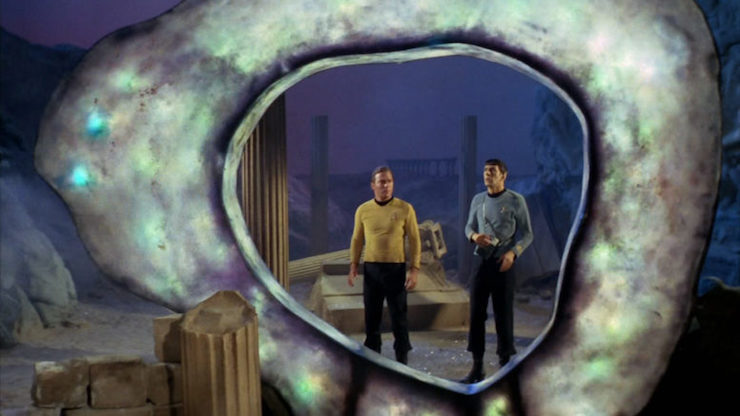Supposedly, the sunny universe of Star Trek is all about exploring outer space, meeting interesting alien cultures, and coming up with peaceful, contemplative solutions to important problems, usually while sitting in a comfortable chair. But, if you only look at the very best episodes of Star Trek, it’s very clear the franchise isn’t about strange new worlds, but instead, exploring screwed up terrible ones. Stand-out episodes of all versions of Trek tend to create trippy scenarios that would make the weirdest Black Mirror episode blush. In other words, the best episodes of Star Trek are almost always exceptions to the supposed rule that Trek is a hopeful vision of the future full of people holding hands and loving each other even if they are a space hedgehog named Neelix.
Buy the Book
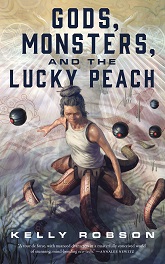

Gods, Monsters, and the Lucky Peach
If you pretend you don’t know anything about the Federation, Gene Roddenberry’s rules about no-conflict in Starfleet, and just look at what the hell is going on in the most beloved episodes of Trek, it’s very obvious the best sci-fi TV series of all time out-Black Mirrors Black Mirror constantly. Here are nine examples of standout Trek episodes from the original series through Discovery that prove it’s just as dark and intellectual than the supposedly darkest contemporary science fiction.
“City on the Edge of Forever”
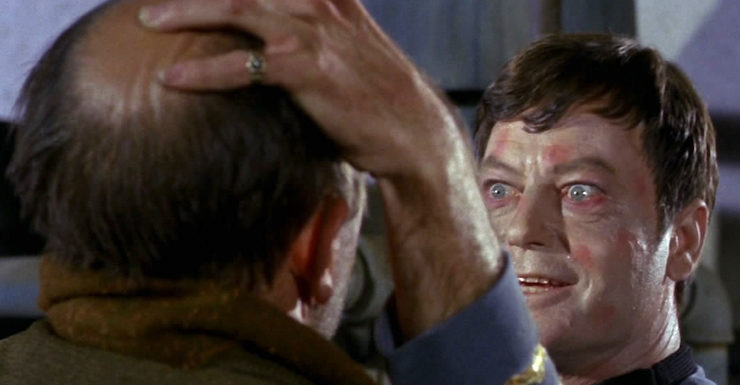
(Original Series, Season 1, Episode 28)
Written by the cantankerous (and controversial) Harlan Ellison, this Trek episode involves Bones overdosing on drugs, an alternate version of Earth ruled by Nazis, and Captain Kirk realizing he has to let the woman of his dreams (a social worker) get hit by a truck to save the timeline. Spock also wears a beanie. For decades, this episode has been voted the very best installment of the original series and it’s dark as shit. It also ends with Kirk just saying “let’s get the hell out here.”
“The Enemy Within”
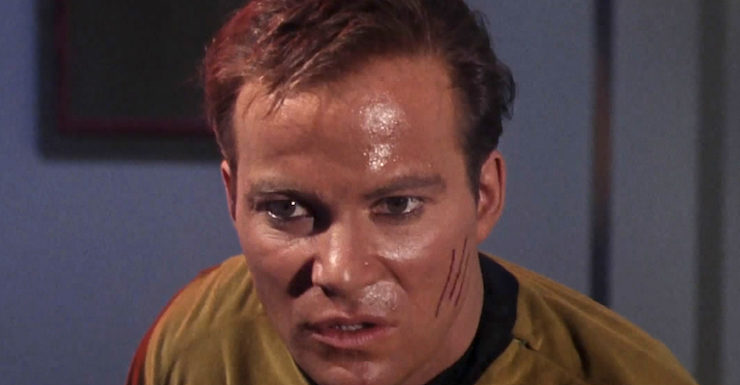
(Original Series, Season 1, Episode 5)
In this episode, a futuristic piece of technology (the transporter) reveals an ugly side of human nature. Turns out, really nice people have jerky, aggressive tendencies. Nearly every single episode of Black Mirror uses this exact equation to create drama: technology+weird quirk human behavior = crazy fucked up shit. Countless Trek episodes after “The Enemy Within” went on to use this same recipe, but in many ways, the one in which Good Kirk and Evil Kirk have to hug it out is the best.
“The Inner Light”
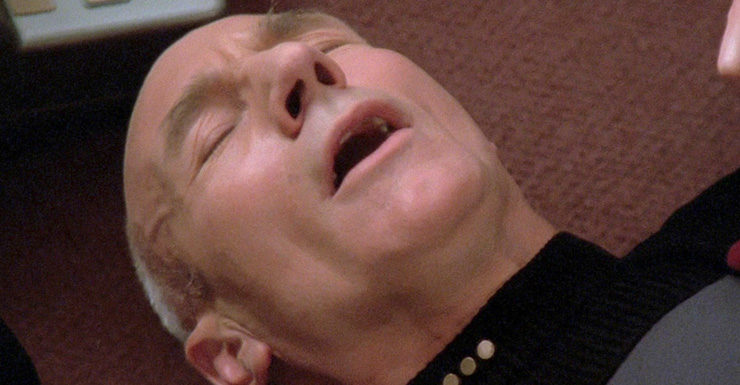
(The Next Generation, Season 5, Episode 25)
The greatest and most subtle episode of The Next Generation is nothing like any other episode of The Next Generation. In fact, it’s basically the precursor to the Black Mirror episode “San Junipero,” but sort of in reverse. Instead of people on the verge of death being uploaded to the cloud, Morgan Gendel’s “The Inner Light” is all about uploading an entire society to the cloud, and then sending it out into space for some dude to relive it centuries later.
“Q Who?” / “The Best of Both Worlds” / “I, Borg,”
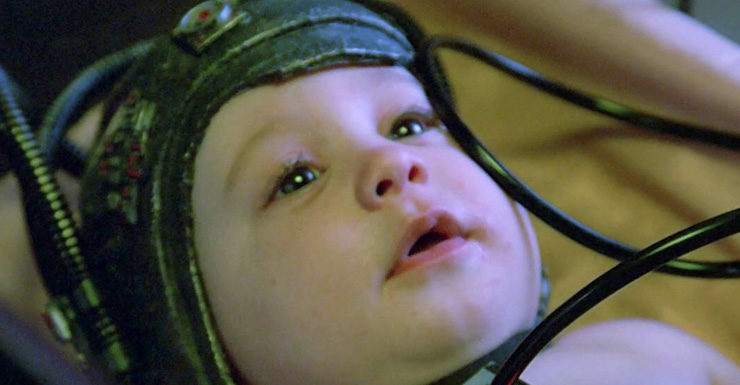
(The Next Generation, Season 2 Episode 16; Season 3 Episode 26; Season 5, Episode 23)
Everything about the Borg predicted not only Black Mirror, but contemporary internet culture, too. Remember the bees episode of Black Mirror, “Hated in the Nation?” That’s basically the Borg on a smaller scale. Plus, countless Black Mirror episodes from “The Entire History of You” to “Men Against Fire” focus on humans augmenting their biology with reality-altering implants. In the very first Borg episode on The Next Generation, we learned that Borg babies got bionic implants the second they were born. Marie did the same thing to her daughter in the Black Mirror episode “Arkangel.”
“The Visitor”
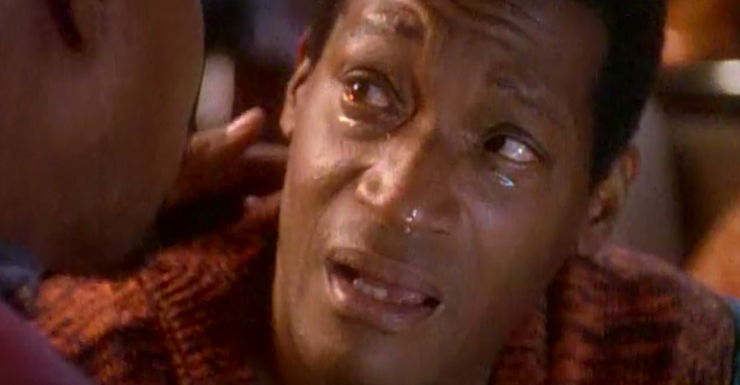
(Deep Space Nine, Season 4, Episode 2)
After young Jake Sisko sees his father sucked into a time vortex, he devotes the rest of his life to bringing his father back to life. In the process, Jake ruins his life so completely that it has to be rebooted entirely. It’s a touching episode about family, but essentially, is also a story about a man whose obsession with changing the past destroys his own future. Because it’s Star Trek, there’s a revised, slightly happier ending. Had this been Black Mirror, Jake would have just gotten steadily worse until he committed suicide. Which, in fairness, is where the DS9 episode indicates he’s headed.
“In the Pale Moonlight”
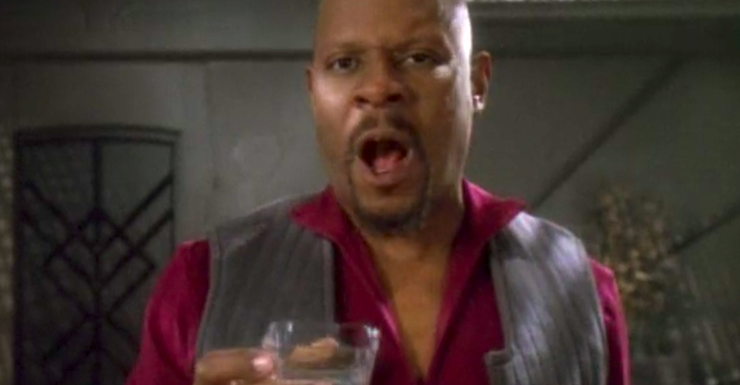
(Deep Space Nine, Season 6, Episode 19)
The ultimate parable about how the images of things matter more in power dynamics than the things themselves. When Sisko tries to fake a bunch of evidence for political reasons, he feels guilty as hell, but he basically goes through with all of it anyway. This episode is the perfect Black Mirror premise because it specifically relies on technology (mostly holograms) being used to influence people’s belief in what is and isn’t real. When the betrayed Romulan says “It’s a FAAKKKKEEE” it’s doubly ironic. Holograms and similar technology create fakery by design, but in this case, the holographic record was a fake of a fake.
“Year of Hell”

(Voyager, Season 4, Episodes 8 and 9)
The best episode of Voyager is also nothing like the rest of Voyager. Not only is this two-parter about a spaceship falling apart, and a group of people making desperate decisions to stay alive, it also features some very advanced technology that allows a culture to “edit” the history of the universe. The large scale of this Voyager episode might make you think it has nothing to do with Black Mirror, but if you think about the technology used by the Kremins, it’s similar to the drugging that happens in the Black Mirror episode “Fifteen Million Merits.”
“Demons” / “Terra Prime”
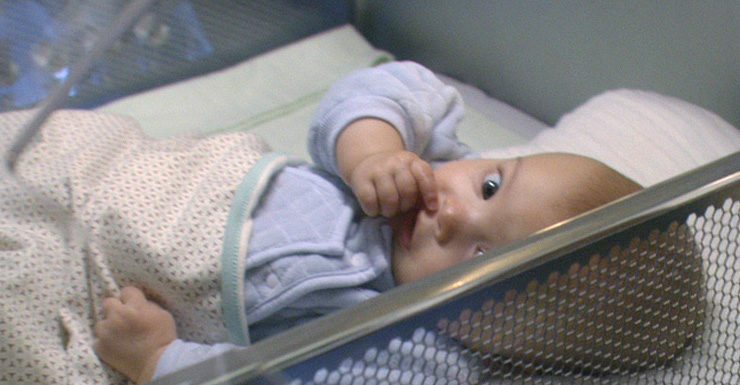
(Enterprise, Season 4, Episodes 20 and 21)
Everything about Captain Kirk’s braggadocious nature in the original Star Trek is skewered in the Black Mirror episode “USS Callister”, but the more interesting part of the episode is the tech that allows the Kirk stand-in to clone people and translate that information digitally. In Black Mirror, super-advanced genetic manipulation is mostly a cautionary tale about isolated male egos gone berserk, but in Star Trek Enterprise, gene-splicing had larger implications. In this two-parter, a xenophobic fanatic creates a hybrid Vulcan/human child in order to specifically enrage racist anti-alien humans. That’s right: an innocent baby was created in a lab as a political ploy. Talk about depraved! Why won’t Star Trek leave these poor future babies alone!
“Magic to Make the Sanest Man Go Mad”
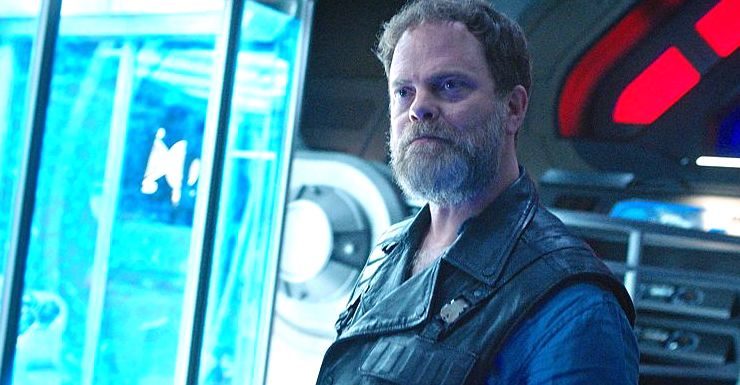
(Discovery, Season 1, Episode 7)
An insane person exploits an endangered animal in order to enact revenge and make a bunch of money. Using experimental technology, he makes a group of people relive one day over and over again until he can get what he wants. Meanwhile, the only guy who knows what is going on is also kind of a jerk and has to convince a very nervous, socially awkward person to trust him. Come on. If you take out the fact that this is set on a spaceship, the best episode of Star Trek: Discovery’s first season already sounds like a Black Mirror premise.
If you’ve never once watched Star Trek before, and you were to watch every episode on this list, you’d have a pretty good idea of what Star Trek is like. And, most interestingly, you might not end up believing it’s as upbeat and squeaky-clean as you were led to believe. But, you may end up with a different revelation; Star Trek is really fucking interesting.










